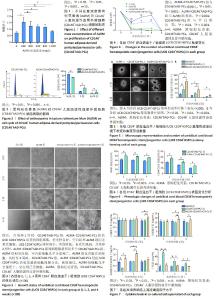[1] 高鲲.黑枸杞的研究进展[J].辽宁农业职业技术学院学报,2021,23(1):4-6.
[2] 武强,薛才华,王梦杰,等.基于AMPK-mTOR信号通路探讨黑果枸杞花青素对小鼠巨噬细胞RAW264.7自噬的影响[J].中国兽医学报,2021,41(11):2176-2181.
[3] LIU Z, TANG X, LIU C, et al. Ultrasonic extraction of anthocyanins from Lycium ruthenicum Murr. and its antioxidant activity. Food Sci Nutr. 2020;8(6):2642-2651.
[4] 李婧,杨芳,栾广祥,等.黑果枸杞的花青素类成分及其药理作用的研究进展[J].华西药学杂志,2022,37(3):331-336.
[5] FAN H, JI Y, WANG Y, et al. Anthocyanins from Lycium ruthenicum Murray Inhibit HepG2 Cells Growth, Metastasis and Promote Apoptosis and G2/M Phase Cycle Arrest by Activating the AMPK/mTOR Autophagy Pathway. Evid Based Complement Alternat Med. 2022;2022:9609596.
[6] 周振东,张乐鸣.原花青素对环磷酰胺致小鼠骨髓抑制的预防及保护作用[J].内蒙古中医药,2014,33(21):92-94.
[7] WILKINSON AC, IGARASHI KJ, NAKAUCHI H. Haematopoietic stem cell self-renewal in vivo and ex vivo. Nat Rev Genet. 2020;21(9):541-554.
[8] PINEAULT N, ABU-KHADER A. Advances in umbilical cord blood stem cell expansion and clinical translation. Exp Hematol. 2015;43(7):498-513.
[9] SANCHEZ-PETITTO G, REZVANI K, DAHER M, et al. Umbilical Cord Blood Transplantation: Connecting Its Origin to Its Future. Stem Cells Transl Med. 2023; 12(2):55-71.
[10] SUN Z, YAO B, XIE H, et al. Clinical Progress and Preclinical Insights Into Umbilical Cord Blood Transplantation Improvement. Stem Cells Transl Med. 2022;11(9): 912-926.
[11] COONEY J. Expansion of Cord Blood Stem Cells and Enhancing Their Mobilization and Homing Potential Using Mesenchymal Stromal Cells. Blood. 2018;132 (Suppl_1):3344-3344.
[12] 周芮,张磊,杨小萍,等.人脂肪源性血管外膜细胞的分离培养和生物学功能分析[J].细胞与分子免疫学杂志,2021,37(4):315-321.
[13] 周芮,杨婷婷,张磊,等.人脂肪源性血管外膜细胞对CD34+造血干/祖细胞体外支持的实验研究[J].宁夏医科大学学报,2021,43(5):453-460+473.
[14] 闫淑萍,王硕,陈涛,等.黑果枸杞花青素提取物的初步毒性评价[J].现代食品科技,2023,39(9):33-41.
[15] DONG Y, YANG C, ZHONG W, et al. Antibacterial effect and mechanism of anthocyanin from Lycium ruthenicum Murr. Front Microbiol. 2022;13:974602.
[16] PENG Q, XU Q, YIN H, et al. Characterization of an immunologically active pectin from the fruits of Lycium ruthenicum. Int J Biol Macromol. 2014;64:69-75.
[17] WANG Z, SUN L, FANG Z, et al. Lycium ruthenicum Murray anthocyanins effectively inhibit alpha-glucosidase activity and alleviate insulin resistance. Food Bioscience. 2021;41(1):1-10.
[18] ZHANG G, CHEN S, ZHOU W, et al. Anthocyanin composition of fruit extracts from Lycium ruthenicum and their protective effect for gouty arthritis. Ind Crops Prod. 2019;129:414-423.
[19] LI ZL, MI J, LU L, et al. The main anthocyanin monomer of Lycium ruthenicum Murray induces apoptosis through the ROS/PTEN/PI3K/Akt/caspase 3 signaling pathway in prostate cancer DU-145 cells. Food Funct. 2021;12(4):1818-1828.
[20] 李婧,杨芳,栾广祥,等.黑果枸杞的花青素类成分及其药理作用的研究进展[J].华西药学杂志,2022,37(3):331-336.
[21] DUAN Y, CHEN F, YAO X, et al. Protective Effect of Lycium ruthenicum Murr. Against Radiation Injury in Mice. Int J Environ Res Public Health. 2015;12(7): 8332-8347.
[22] CRISAN M, YAP S, CASTEILLA L, et al. A perivascular origin for mesenchymal stem cells in multiple human organs. Cell Stem Cell. 2008;3(3):301-313.
[23] DING L, SAUNDERS TL, ENIKOLOPOV G, et al. Endothelial and perivascular cells maintain haematopoietic stem cells. Nature. 2012;481(7382):457-462.
[24] SÁ DA BANDEIRA D, CASAMITJANA J, CRISAN M. Pericytes, integral components of adult hematopoietic stem cell niches. Pharmacol Ther. 2017;171:104-113.
[25] AHMED TA, SHOUSHA WG, ABDO SM, et al. Human Adipose-Derived Pericytes: Biological Characterization and Reprogramming into Induced Pluripotent Stem Cells. Cell Physiol Biochem. 2020;54(2):271-286.
[26] LUPO G, AGAFONOVA A, COSENTINO A, et al. Protective Effects of Human Pericyte-like Adipose-Derived Mesenchymal Stem Cells on Human Retinal Endothelial Cells in an In Vitro Model of Diabetic Retinopathy: Evidence for Autologous Cell Therapy. Int J Mol Sci. 2023;24(2):913.
[27] SILVEIRA BM, RIBEIRO TO, FREITAS RS, et al. Secretome from human adipose-derived mesenchymal stem cells promotes blood vessel formation and pericyte coverage in experimental skin repair. PLoS One. 2022;17(12):e0277863.
[28] BHATIA M, BONNET D, KAPP U, et al. Quantitative analysis reveals expansion of human hematopoietic repopulating cells after short-term ex vivo culture. J Exp Med. 1997;186(4):619-624.
[29] PINEAULT N, CORTIN V, BOYER L, et al. Individual and synergistic cytokine effects controlling the expansion of cord blood CD34(+) cells and megakaryocyte progenitors in culture. Cytotherapy. 2011;13(4):467-480.
[30] EMILOJU OE, POTDAR R, JORGE V, et al. Clinical Advancement and Challenges of ex vivo Expansion of Human Cord Blood Cells. Clin Hematol Int. 2019;2(1):18-26.
[31] USLU M, ALBAYRAK E, KOCABAŞ F. Competitive inhibition of IL-2/IL-2R has a dual effect on HSC ex vivo expansion and IL-2R (CD25) content. Int Immunopharmacol. 2022;110:109035.
[32] DOUGAN M, DRANOFF G, DOUGAN SK. GM-CSF, IL-3, and IL-5 Family of Cytokines: Regulators of Inflammation. Immunity. 2019;50(4):796-811.
[33] MOMBLED M, RODRIGUEZ L, AVALON M, et al Characteristics of cells with engraftment capacity within CD34+ cell population upon G-CSF and Plerixafor mobilization. Leukemia. 2020;34(12):3370-3381.
[34] MERLI P, QUINTARELLI C, STROCCHIO L, et al. The role of interferon-gamma and its signaling pathway in pediatric hematological disorders. Pediatr Blood Cancer. 2021;68(4):e28900. |

